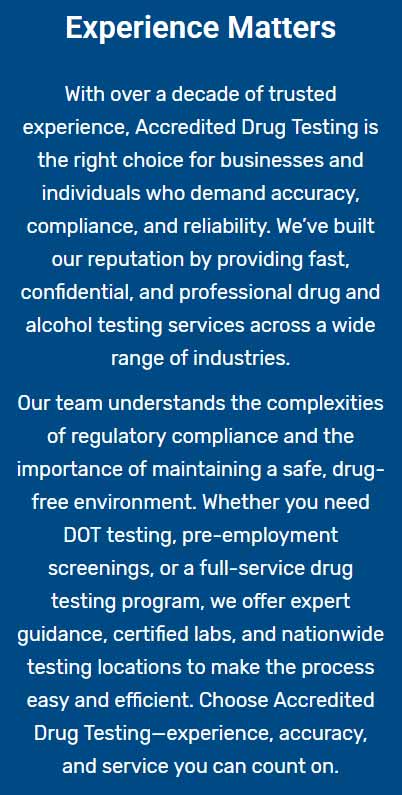What it is, How it works
Hair analysis has gained recognition as an effective method for detecting substance and alcohol use. Hair captures a long-term record of alcohol and other drugs by incorporating biomarkers within the growing hair strand's fibers. When gathered near the scalp, hair can offer up to roughly a 3-month detection timeframe for alcohol and other drugs. The collection of hair is straightforward, challenging to tamper with, and simple to transport.
A 1.5-inch segment comprising about 200 hair strands (around the diameter of a #2 pencil) nearest to the scalp will yield 100mg of hair, which is the perfect amount for screening and verification. For EtG, expanded panels, and/or screenings exceeding 10 panels, a 150mg sample is advisable. It is suggested to measure the sample using a jeweler’s scale. If scalp hair is unattainable, a comparable quantity of body hair can be used. When referencing head hair, we specifically mean scalp hair. Body hair includes all other hair types (facial, axillary, etc.).
Process Overview
The four key stages in the laboratory evaluation of a drug test outcome are Accessioning, Screening, Extraction, and Confirmation.
Accessioning entails the primary processing of a sample into a lab’s system. This process ensures that the sample was properly sealed and sent, assigns a random LAN (Laboratory Accessioning Number), and completes any additional data entry not already provided by an electronic chain of custody system.
Screening involves a preliminary swift analysis for drugs of abuse. Although Screening is a cost-efficient strategy to exclude drug use in most samples, a positive screen must be confirmed to be admissible in legal settings. Any samples identified as possibly positive in Screening do require additional confirmation.
If a sample shows potential positivity in the Screening phase, additional hair is extracted from the initial sample and readied for Extraction. During this phase, drugs are isolated from hair at much lower concentrations than in alternative methods (e.g., urine or oral fluid), making hair drug screening the most challenging method to execute.
Any positive screening outcome is verified via GC/MS, GC/MS/MS, or LC/MS/MS. All samples with potential positivity are cleansed before confirmation if needed. The comprehensive laboratory process from Accessioning to Confirmation is evaluated under both the CAP (College of American Pathologists) Hair designation and the accreditation to ISO / IEC 17025 benchmarks.
Advantages of hair drug testing:
- Long detection timeframe: Hair drug tests can capture drug use up to 90 days, unlike urine tests which have a limited detection period.
- Difficult to falsify: It is quite arduous to falsify a hair drug test, enhancing result precision.
- Offers historical insight: It can reveal a pattern of substance use over time, not just recent consumption.
Limitations:
- Cannot detect recent usage: It requires about 5-7 days for drugs to become detectable in hair.
- Expense: Hair drug tests generally incur higher costs than other drug testing approaches.
- Variability in outcomes: Elements like hair color and individual hair growth variances can influence the concentration of drug residues in the hair.
Note: Despite being commonly called "hair follicle tests", the test examines the hair strand and not the follicle beneath the scalp
Tamper-Resistant Testing Method
Hair follicle tests in Homestead Valley, CA, offer tamper-resistant results, significantly curbing sample adulteration.
- Reduced risk of manipulation enhances test credibility.
- Reliable outcomes that are challenging to alter.
Consequently, these tests ensure that outcomes are not only reliable but also trustworthy, establishing high-definition accuracy in each screening.




